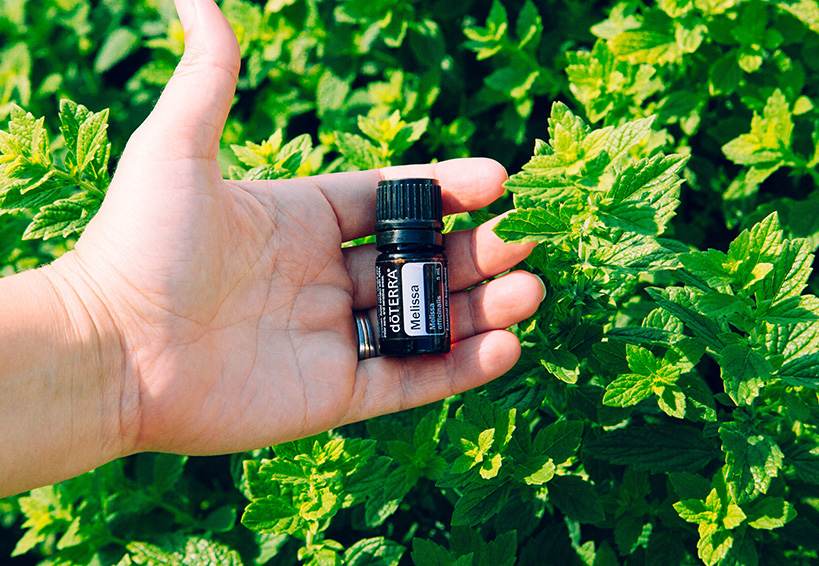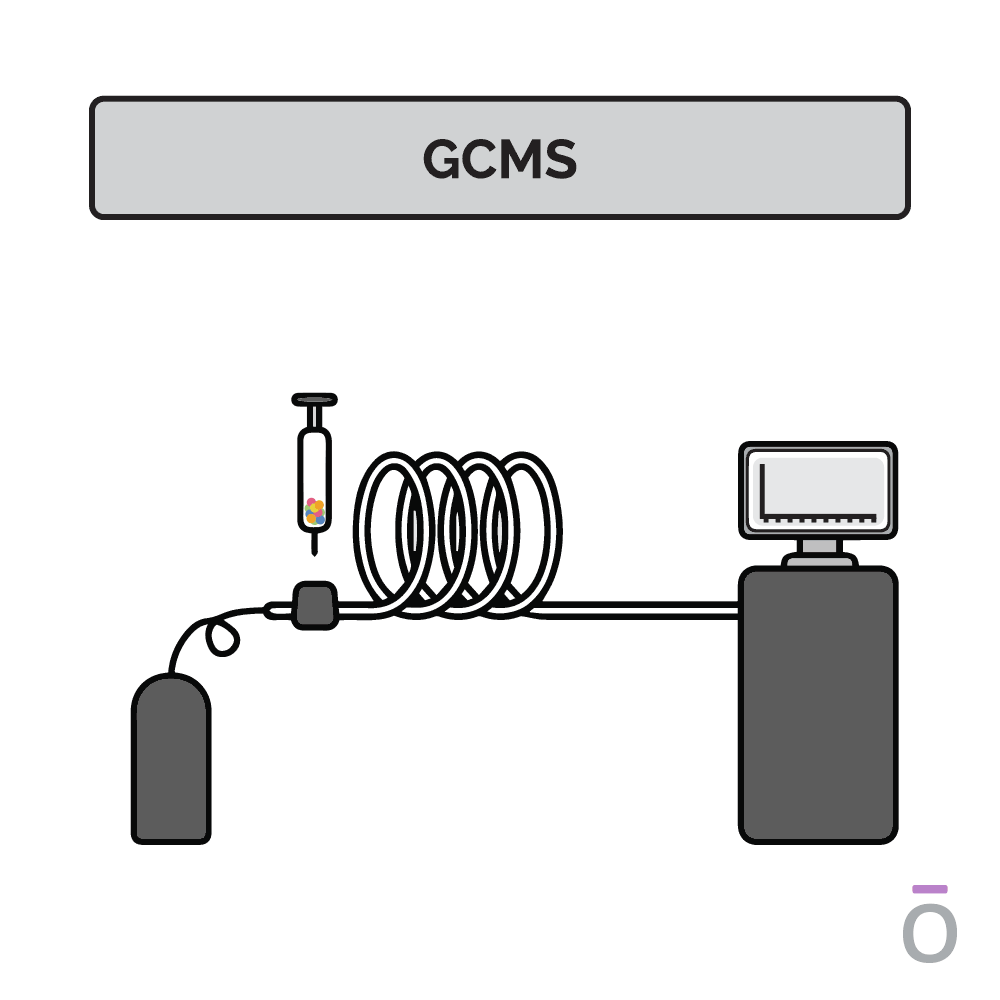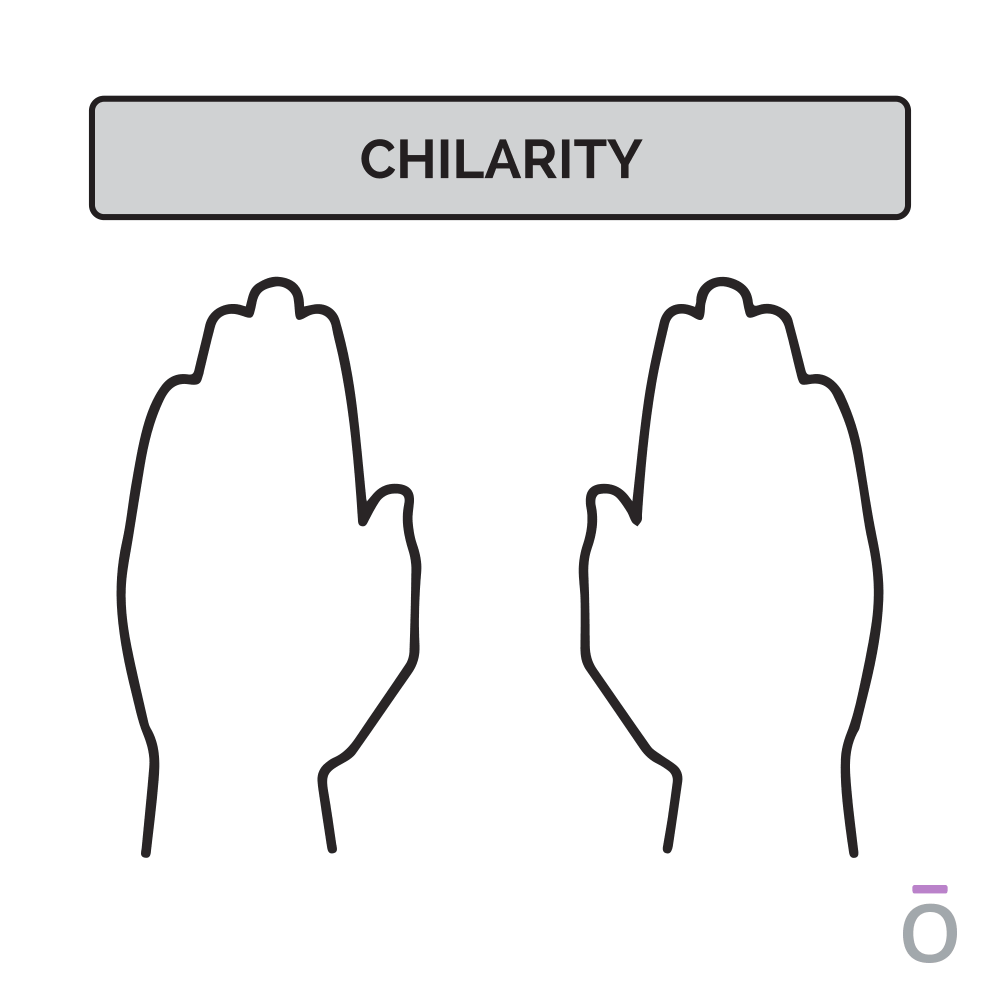ต้นกำเนิด: จากภาษาละติน
มีความมหมายว่า "ของขวัญจากผืนโลก"
การตรวจสอบคุณภาพตามมาตรฐาน CPTG (ซีพีทีจี)
น้ำมัน doTERRA บริสุทธิ์หรือไม่?
ความบริสุทธิ์ของน้ำมันหอมระเหยถือเป็นคุณสมบัติที่สำคัญที่สุด เมื่อน้ำมันหอมระเหยถูกผสมหรือปนเปื้อน จะทำให้มีประสิทธิภาพลดลงและอาจเป็นอันตรายได้ เหนือสิ่งอื่นใด ความบริสุทธิ์คือสิ่งสำคัญอันดับแรกของ doTERRA เมื่อผลิตน้ำมันหอมระเหย
doTERRA มั่นใจได้อย่างไรว่าน้ำมันหอมระเหยของตนบริสุทธิ์?
ตั้งแต่แรกเริ่ม เรามุ่งมั่นที่จะแบ่งปันน้ำมันหอมระเหยบริสุทธิ์คุณภาพให้กับคนทั่วโลก อย่างไรก็ตาม เนื่องจากไม่มีมาตรฐานที่ชัดเจนสำหรับความบริสุทธิ์ของน้ำมันหอมระเหย doTERRA จึงตัดสินใจกำหนดมาตรฐานความบริสุทธิ์ในอุตสาหกรรมน้ำมันหอมระเหย
บริษัทน้ำมันหอมระเหยไม่ทุกแห่งเลือกที่จะบังคับใช้มาตรฐานการทดสอบที่สูงสำหรับน้ำมันของตน ในความเป็นจริง บริษัทหลายแห่งละเลยขั้นตอนสำคัญในกระบวนการทดสอบเพื่อประหยัดเงินหรือเวลา น่าเสียดายที่หากไม่ได้ใช้มาตรการทดสอบที่เหมาะสม ก็ไม่สามารถรับรองได้ว่าน้ำมันหอมระเหยนั้น "บริสุทธิ์" อย่างแท้จริง
เพื่อให้แน่ใจว่าน้ำมันหอมระเหยแต่ละขวดบริสุทธิ์และปราศจากสารปนเปื้อนหรือสารสังเคราะห์ doTERRA จึงได้สร้างโปรโตคอล CPTG Certified Pure Tested Grade ® ขึ้น กระบวนการ CPTG ประกอบด้วยการตรวจสอบน้ำมันทุกชุดอย่างเข้มงวด รวมถึงการทดสอบจากบุคคลที่สามเพื่อรับประกันความโปร่งใส
เหตุใดการใช้น้ำมันหอมระเหยบริสุทธิ์จึงสำคัญ?

บางคนถามว่า “ความบริสุทธิ์ของน้ำมันหอมระเหยสำคัญจริงหรือ” หรือ “จะเกิดอะไรขึ้นถ้าฉันใช้น้ำมันหอมระเหยที่ไม่บริสุทธิ์”
คำตอบคือใช่ ความบริสุทธิ์ของน้ำมันหอมระเหยมีความสำคัญ หากคุณใช้น้ำมันที่มีการเจือปน ปนเปื้อน หรือเติมสารตัวเติมสังเคราะห์ คุณจะไม่ได้รับคุณประโยชน์จากธรรมชาติของพืชอย่างเต็มที่ และในบางกรณี น้ำมันคุณภาพต่ำอาจเป็นอันตรายและเป็นอันตรายต่อสุขภาพของคุณได้อีกด้วย
นี่คือเหตุผลที่ doTERRA ใส่ใจอย่างยิ่งต่อความบริสุทธิ์ของน้ำมันหอมระเหย หากคุณใช้น้ำมันที่ไม่บริสุทธิ์ คุณอาจสัมผัสได้ถึงคุณประโยชน์ของน้ำมันได้ยาก และอาจส่งผลเสียต่อสุขภาพของคุณได้ อย่างไรก็ตาม หากคุณใช้น้ำมันหอมระเหยบริสุทธิ์ที่ไม่ผ่านการปรุงแต่ง น้ำมันหอมระเหยจะมีประสิทธิภาพมากกว่า และคุณสามารถใช้ได้อย่างปลอดภัย
วิธีทราบว่าน้ำมันหอมระเหยของคุณบริสุทธิ์หรือไม่
คุณจะทราบได้อย่างไรว่าน้ำมันหอมระเหยของคุณบริสุทธิ์ ก่อนที่คุณจะซื้อน้ำมันหอมระเหย ควรค้นคว้าข้อมูลเล็กน้อยเพื่อดูว่าบริษัทน้ำมันหอมระเหยจัดหา ผลิต และทดสอบน้ำมันของตนอย่างไร
ต่อไปนี้คือคำถามบางส่วนที่คุณควรถามในระหว่างการค้นคว้าของคุณ:
- คุณภาพของพืช:บริษัทใช้พืชคุณภาพสูงในการผลิตน้ำมันหอมระเหยหรือไม่ มีการใช้สารเคมีและยาฆ่าแมลงในการดูแลพืชหรือไม่
- แนวทางปฏิบัติด้านการผลิต:บริษัทมีขั้นตอนด้านความปลอดภัยเพื่อป้องกันการปนเปื้อนระหว่างกระบวนการผลิตหรือไม่ มีการปนเปื้อนน้ำมันหรือมีการเพิ่มสารตัวเติมสังเคราะห์เพื่อลดต้นทุนหรือไม่
- วิธีการทดสอบ:บริษัททดสอบน้ำมันหอมระเหยทุกล็อตหรือไม่? ใช้การทดสอบจากบุคคลที่สามอย่างเป็นกลางหรือไม่? ผลการทดสอบเปิดเผยต่อสาธารณะหรือไม่?
- การจัดเก็บและการจัดการ:น้ำมันได้รับการแปรรูป บรรจุ และจัดเก็บอย่างระมัดระวังเพื่อหลีกเลี่ยงการเปลี่ยนแปลงทางเคมีที่เกิดจากการสัมผัสกับความร้อนหรือแสงหรือไม่ (โดยทั่วไปแล้วขวดสีอำพันเป็นตัวเลือกที่ดีที่สุดสำหรับการจัดเก็บน้ำมันหอมระเหย)
การรับประกันความบริสุทธิ์ของน้ำมันหอมระเหย: กระบวนการ CPTG
doTERRA เริ่มกระบวนการทดสอบ CPTG ไม่นานหลังจากการกลั่น โดยจะตรวจสอบองค์ประกอบทางเคมีของน้ำมันแต่ละชนิด โรงงานผลิตของ doTERRA ดำเนินการทดสอบรอบที่สองเพื่อให้แน่ใจว่าน้ำมันที่กลั่นและทดสอบในรอบแรกเป็นน้ำมันชนิดเดียวกับที่ส่งมาที่โรงงานของเรา การตรวจสอบองค์ประกอบทางเคมีของน้ำมันเป็นครั้งที่สามจะดำเนินการในขณะที่บรรจุน้ำมันลงในขวดก่อนส่งไปยังผู้บริโภค
การทดสอบแต่ละครั้งยืนยันว่าน้ำมันหอมระเหยของเราปราศจากสารปนเปื้อนและไม่มีการเปลี่ยนแปลงที่ไม่คาดคิดเกิดขึ้นระหว่างการผลิต
8 วิธีในการรู้ว่าน้ำมันหอมระเหย doTERRA นั้นบริสุทธิ์
กระบวนการทดสอบคุณภาพ CPTG ประกอบด้วย 8 ขั้นตอนหลักเพื่อรับประกันว่าน้ำมันหอมระเหย doTERRA ทุกแบทช์นั้นบริสุทธิ์ ไม่เจือปน และปลอดภัยต่อการใช้งาน
นี่คือการทดสอบที่ doTERRA ใช้เพื่อรับรองความบริสุทธิ์ของน้ำมันหอมระเหย:
- การทดสอบแบบออแกโนเลพติก
- การทดสอบไมโครเบียล
- การทดสอบแมส สเปคโตรเมทรี
- การทดสอบแก๊ส โครมาโตรกราฟี
- การทดสอลโฟริเออร์ ทรานส์ฟอร์ม อินฟราเรด สเปคโตรสโคปี
- การทดสอบไคราลิตี้
- การทดสอบไอโซโทพิค
- การทดสอบโลหะหนัก
ใช้การทดสอบด้วยออแกโนเลพติก (Organoleptic test) เพื่อตรวจหาความบริสุทธิ์ของน้ำมันหอมระเหย
การทดสอบด้วยวิธีการออแกโนเลพติก คือการใช้ประสาทสัมผัสเกี่ยวข้องกับการใช้ประสาทสัมผัสของมนุษย์ โดยเฉพาะการมองเห็น ดมกลิ่น รับรสและการสัมผัส สำหรับผู้เชี่ยวชาญด้านการกลั่น ประสาทสัมผัสจำเป็นต่อการทดสอบคุณภาพของผลิตภัณฑ์น้ำมันหอมระเหย น้ำมันที่มีกลิ่นผิดปกติ มีลักษณะทางกายภาพที่ไม่คงที่ หรือมีสีที่เปลี่ยนแปลงไป ปัจจัยเหล่านี้จะบอกให้ผู้กลั่นทราบทันทีว่ามีบางอย่างผิดปกติ บ่อยครั้งการทดสอบในลักษณะนี้ถูกใช้เป็นขั้นตอนในการควบคุมคุณภาพเบื้องต้นก่อนที่จะมีการทดสอบอื่นๆ
ใช้การทดสอบไมโครเบียล (Microbial test) เพื่อตรวจหาความบริสุทธิ์ของน้ำมันหอมระเหย
ใช้กระบวนการแก๊ส โครมาโตรกราฟี (gas chromatography) เพื่อตรวจสอบความบริสุทธิ์ของน้ำมันหอมระเหย
ในกระบวนการแก๊ส โครมาโทกราฟี น้ำมันหอมระเหยจะถูกทำให้เป็นไอและส่งไอที่ระเหยนี้ผ่านท่อยาวเพื่อแยกน้ำมันออกเป็นส่วนประกอบแต่ละส่วน ส่วนประกอบแต่ละตัวจะเคลื่อนที่ผ่านท่อด้วยความเร็วที่แตกต่างกันขึ้นอยู่กับน้ำหนักโมเลกุลและคุณสมบัติทางเคมีซึ่งวัดได้เมื่อออกจากท่อ การใช้วิธีการทดสอบนี้จะทำให้นักวิทยาศาสตร์ผู้ควบคุมคุณภาพ สามารถระบุได้ว่าตัวอย่างของน้ำมันหอมระเหยมีสารประกอบใดบ้าง

ใช้กระบวนการแมส สเปคโตรเมทรี (mass spectrometry) เพื่อตรวจสอบความบริสุทธิ์ของน้ำมันหอมระเหย
กระบวนการแมส สเปคโตรเมทรี จะใช้ร่วมกับ แก๊ส โครมาโตรกราฟี เพื่อกำหนดองค์ประกอบของน้ำมันหอมระเหย เมื่อมวลสารองค์ประกอบถูกแยกออกจากกันในกระบวนการ แก๊ส โครมาโตรกราฟี มวลสารนี้จะแตกตัวเป็นไอออนและส่งผ่านสนามแม่เหล็กในกระบวนการแมส สเปคโตรเมทรี ซึ่งนักวิทยาศาสตร์จะสามารถระบุน้ำหนักของโมเลกุลและประจุของแต่ละองค์ประกอบได้ ซึ่งถือว่าเป็นข้อมูลเชิงลึกเพิ่มเติมเกี่ยวกับความสามารถของน้ำมันหอมระเหย
ใช้กระบวนการโฟริเออร์ - ทรานส์ฟอร์ม อินฟราเรด สเปคโตรสโคปี (Fourier-transform infrared spectroscopy (FTIR)) เพื่อตรวจสอบความบริสุทธิ์ของน้ำมันหอมระเหย
โฟริเออร์ - ทรานส์ฟอร์ม อินฟราเรด สเปคโตรสโคปี (FTIR) จะถูกใช้เพื่อให้แน่ใจว่าน้ำมันหอมระเหยมีประสิทธิภาพและคุณภาพสม่ำเสมอ วิธีการทดสอบนี้สามารถระบุส่วนประกอบและโครงสร้างของสารประกอบของน้ำมันหอมระเหย ในการสแกน FTIR แสงอินฟราเรดที่มีความถี่ต่างกัน จะส่องผ่านตัวอย่างน้ำมันหอมระเหยและวัดปริมาณแสงที่ตัวอย่างดูดซับไว้ การวัดคุณภาพของตัวอย่างจะทำผ่านการเปรียบเทียบผลลัพธ์จากการอ่านค่า FTIR กับฐานข้อมูลในอดีตที่ได้บันทึกรูปแบบการดูดซึมของตัวอย่างน้ำมันหอมระเหยที่มีคุณภาพสูง

ใช้การทดสอบไคราลิตี้ (chairality test) เพื่อตรวจหาความบริสุทธิ์ของน้ำมันหอมระเหย
การทดสอบไคราลิตี้ เป็นคำที่มาจากภาพสะท้อนของมือในกระจกเงา ซึ่งเป็นคำที่ใช้อธิบายการวางแนว 3 มิติของโมเลกุล เช่นเดียวกับมือของคุณที่มีสองข้าง โมเลกุลของไครัลมีอยู่ในสองรูปแบบโดยแยกเป็นมือขวาหรือมือซ้าย คุณอาจนึกภาพหลักการนี้ได้โดยดูที่มือของคุณ: เมื่อวางเคียงข้างกันสิ่งเหล่านี้จะสะท้อนภาพของกันและกัน
ในโมเลกุลของ “มือ” แต่ละข้างมีคุณสมบัติทางเคมีที่แตกต่างกัน ซึ่งส่งผลต่อปฏิสัมพันธ์ทางสรีรวิทยาในร่างกาย มือข้างหนึ่งเกิดขึ้นจากธรรมชาติเป็นหลัก อย่างไรก็ตามในสภาพแวดล้อมในห้องปฏิบัติการ อัตราส่วนของโมเลกุลขวาต่อซ้ายจะอยู่ที่ 50/50 เสมอ เนื่องจากความคล้ายคลึงกันของโครงสร้าง อัตราส่วนขององค์ประกอบด้านขวาต่อซ้ายสามารถกำหนดได้โดยใช้แก๊ส โครมาโตรกราฟี ชนิดพิเศษ
แม้ว่าจะไม่ได้ดำเนินการแบบกลุ่มต่อกลุ่ม แต่วิธีการทดสอบนี้ใช้เพื่อให้แน่ใจว่าไม่มีองค์ประกอบสังเคราะห์อยู่ในน้ำมันหอมระเหยใดๆ

ใช้การทดสอบไอโซโทพิค (Isotopic analysis test) เพื่อตรวจหาความบริสุทธิ์ของน้ำมันหอมระเหย
สสารประกอบด้วยส่วนประกอบเล็กๆ ทางเคมี ที่เรียกว่าองค์ประกอบ แม้ว่าจะมีองค์ประกอบหลายสิบตัว แต่ละองค์ประกอบมีความแตกต่างกัน เนื่องจากมีโปรตอน บางครั้งองค์ประกอบสามารถมีอยู่ในรูปแบบที่เสถียรได้มากกว่าหนึ่งรูปแบบหากมีจำนวนนิวตรอนมากขึ้นหรือน้อยลง เมื่อสิ่งนี้เกิดขึ้น องค์ประกอบจะเรียกว่าไอโซโทป องค์ประกอบคาร์บอนมีไอโซโทปเสถียร 2 ชนิดคือ คาร์บอน-12 (6 โปรตอนและ 6 นิวตรอน) และคาร์บอน-13 (6 โปรตอนและ 7 นิวตรอน)
เนื่องจากน้ำมันหอมระเหยเป็นสารประกอบอินทรีย์ จึงประกอบด้วยอะตอมของคาร์บอนเป็นหลัก มีอัตราส่วนของคาร์บอน-12 ต่อคาร์บอน-13 ไอโซโทปที่แน่นอน อัตราส่วนนี้แตกต่างกันไปตามพื้นที่ภูมิประเทศทั่วโลก
การใช้ แมส สเปคโตรเมทรี ชนิดพิเศษทำให้สามารถระบุได้ว่าไอโซโทปใดมีอยู่ในส่วนประกอบของน้ำมันหอมระเหยและมีในปริมาณเท่าใด หากน้ำมันหอมระเหยมาจากแหล่งเดียวกัน ส่วนประกอบทั้งหมดในน้ำมันหอมระเหยควรมีอัตราส่วนของไอโซโทปเท่ากัน หากส่วนประกอบใดมีโปรไฟล์ไอโซโทปที่แตกต่างจากองค์ประกอบอื่น นักวิทยาศาสตร์ผู้ควบคุมคุณภาพ จะทราบว่าน้ำมันหอมระเหยชนิดนั้นมีสิ่งปนเปื้อน

ใช้การทดสอบโดยใช้โลหะหนัก (heavy metal test) เพื่อตรวจหาความบริสุทธิ์ของน้ำมันหอมระเหย
การทดสอบโดยใช้โลหะหนักจะแสดงปริมาณโลหะหนักในน้ำมันหอมระเหยเมื่อกลั่นอย่างเหมาะสม น้ำมันหอมระเหยไม่ควรมีโลหะหนัก การทดสอบ ICP-MS คือการใช้สื่อพลังงานสูงที่เรียกว่า อินดัคทีฟลี่ คัพเพิล พลาสมา (Inductively coupled plasma (ICP)) เพื่อทำให้ตัวอย่างน้ำมันหอมระเหยแตกตัวเป็นไอออน จากนั้นตัวอย่างจะถูกส่งไปยังเครื่องแมส สเปคโตรสโคป ซึ่งแยกตัวอย่างออกเป็นส่วนขององค์ประกอบ ที่บ่งชี้ว่ามีองค์ประกอบใดบ้างและในปริมาณเท่าใด
ขั้นตอนก่อนการตรวจสอบคุณภาพตามมาตรฐาน CPTG (ซีพีทีจี)
นอกจากวิธีการปลูกที่เหมาะสม การเก็บเกี่ยว และ การกลั่น มีความสำคัญในการทำให้น้ำมันหอมระเหยมีความบริสุทธิ์ ซึ่งการวิเคราะห์ถึงความบริสุทธิ์นั้นจะต้องผ่านกระบวนการทางวิทยาศาสตร์เท่านั้น เพราะการแยกแยะน้ำมันหอมระเหยที่ผ่านการผลิตที่ไม่ได้มาตรฐานหรือน้ำมันหอมระเหยสังเคราะห์ไม่สามารถทำได้ด้วยการมองด้วยตาเปล่า เนื่องจากจำเป็นต้องใช้วิธีการตรวจสอบที่มีรายละเอียดอย่างมาก การวิเคราะห์ทางวิทยาศาตร์เท่านั้นจึงจะช่วยควบคุมคุณภาพของน้ำมันหอมระเหยได้
การคัดเลือกสายพันธุ์ของพืชคือขั้นตอนแรกที่สำคัญเพื่อให้สามารถผลิตน้ำมันหอมระเหยที่มีคุณประโยชน์สูงสุดได้
ขั้นตอนดังกล่าว อาศัยความเชี่ยวชาญของนักพฤกษศาสตร์ นักเคมีและผู้เชี่ยวชาญด้านสุขภาพ รวมถึงใช้เครื่องมือทางพฤกษศาสตร์ที่ได้รับการคัดเลือกอย่างพิถีพิถัน เพื่อทำให้น้ำมันหอมระเหยสามารถคงความเข้มข้นและยังคงประสิทธิภาพไม่เปลี่ยนแปลง
กระบวนการกลั่นน้ำมันหอมระเหยเกรด ซีพีทีจี (CPTG)
การทดสอบซีพีทีจี (CPTG) จะเริ่มขึ้นทันทีหลังจากการกลั่นน้ำมันแต่ละครั้ง ซึ่งจะได้รับการตรวจสอบองค์ประกอบทางเคมี การทดสอบรอบที่สองจะถูกดำเนินการที่โรงงานผลิตของเราเพื่อให้แน่ใจว่าสิ่งที่กลั่นและทดสอบเป็นน้ำมันหอมระเหยแบบเดียวกับที่ได้รับการตรวจสอบทางเคมีของน้ำมัน การทดสอบรอบที่สามขององค์ประกอบทางเคมีในน้ำมันหอมระเหยจะถูกดำเนินการในขั้นตอนเฟสที่สาม นั่นคือการบรรจุน้ำมันหอมระเหยในขวดสำหรับส่งต่อให้ผู้บริโภค การทดสอบแต่ละครั้งจะยืนยันว่าน้ำมันหอมระเหยปราศจากสารปนเปื้อนและไม่มีการเปลี่ยนแปลงที่ไม่คาดคิดในระหว่างกระบวนการผลิต
น้ำมันหอมระเหยเกรดซีพีทีจี (Certified Pure Tested Grade (CPTG) มีกระบวนการตรวจสอบคุณภาพด้วยใช้การทดสอบดังนี้
- การทดสอบแบบออแกโนเลพติก
- การทดสอบไมโครเบียล
- การทดสอบแมส สเปคโตรเมทรี
- การทดสอบแก๊ส โครมาโตรกราฟี
- การทดสอลโฟริเออร์ ทรานส์ฟอร์ม อินฟราเรด สเปคโตรสโคปี
- การทดสอบไคราลิตี้
- การทดสอบไอโซโทพิค
- การทดสอบโลหะหนัก
ในอดีตกระบวนการทดสอบแก๊ส โครมาโตรกราฟี ก็เพียงพอที่จะระบุส่วนประกอบแต่ละส่วนในน้ำมันหอมระเหยแล้ว แต่อย่างไรก็ตาม เนื่องจากกระบวนการผลิตน้ำมันหอมระเหยสังเคราะห์ มีกระบวนการที่ซับซ้อนมากขึ้น เราจึงจำเป็นต้องใช้วิธีการตรวจสอบเพิ่มเติม และเมื่อเวลาผ่านไปวิธีการทดสอบเพิ่มเติมเช่น แมส สเปคโตรสโคปี, การวิเคราะห์ไครัล, FTIR สแกน, การวิเคราะห์ไอโซโทปของคาร์บอนและอื่นๆ ก็ได้รับการพัฒนาเพื่อระบุส่วนประกอบของน้ำมันหอมระเหยแต่ละชนิดได้แม่นยำยิ่งขึ้น
การทดสอบแบบออแกโนเลพติก
การทดสอบไมโครเบียล
การทดสอบไมโครเบียล คือการทดสอบด้วยจุลินทรีย์ ดำเนินการโดยการวิเคราะห์น้ำมันหอมระเหยชุดหนึ่ง เพื่อหาจุลินทรีย์ที่เป็นอันตรายทางชีวภาพ เช่น กลุ่มเชื้อรา แบคทีเรีย ไวรัสและรา กระบวนการนี้เริ่มจากการเตรียมตัวอย่างน้ำมันหอมระเหย จากนั้นใส่อาหารสำหรับเลี้ยงจุลินทรีย์ที่ปราศจากเชื้อลงไปในแผ่นหรือจานเพาะเชื้อที่ปิดมิดชิด ตัวอย่างจะถูกฟักตัวเป็นระยะเวลาหนึ่งแล้วสังเกตการเจริญเติบโตของจุลินทรีย์ การทดสอบนี้จะถูกใช้กับผลิตภัณฑ์ที่เข้าสู่โรงงานผลิตและผลิตภัณฑ์สำเร็จรูปก่อนการจัดจำหน่ายเพื่อให้แน่ใจว่าไม่มีการปนเปื้อนในระหว่างกระบวนการบรรจุ
การทดสอบแมส สเปคโตรเมทรี และ การทดสอบแก๊ส โครมาโตรกราฟี
ในกระบวนการแก๊ส โครมาโทกราฟี น้ำมันหอมระเหยจะถูกทำให้เป็นไอและส่งไอที่ระเหยนี้ผ่านท่อยาวเพื่อแยกน้ำมันออกเป็นส่วนประกอบแต่ละส่วน ส่วนประกอบแต่ละตัวจะเคลื่อนที่ผ่านท่อด้วยความเร็วที่แตกต่างกันขึ้นอยู่กับน้ำหนักโมเลกุลและคุณสมบัติทางเคมีซึ่งวัดได้เมื่อออกจากท่อ การใช้วิธีการทดสอบนี้จะทำให้นักวิทยาศาสตร์ผู้ควบคุมคุณภาพ สามารถระบุได้ว่าตัวอย่างของน้ำมันหอมระเหยมีสารประกอบใดบ้าง
กระบวนการแมส สเปคโตรเมทรี จะใช้ร่วมกับ แก๊ส โครมาโตรกราฟี เพื่อกำหนดองค์ประกอบของน้ำมันหอมระเหย เมื่อมวลสารองค์ประกอบถูกแยกออกจากกันในกระบวนการ แก๊ส โครมาโตรกราฟี มวลสารนี้จะแตกตัวเป็นไอออนและส่งผ่านสนามแม่เหล็กในกระบวนการแมส สเปคโตรเมทรี ซึ่งนักวิทยาศาสตร์จะสามารถระบุน้ำหนักของโมเลกุลและประจุของแต่ละองค์ประกอบได้ ซึ่งถือว่าเป็นข้อมูลเชิงลึกเพิ่มเติมเกี่ยวกับความสามารถของน้ำมันหอมระเหย
การทดสอบโฟริเออร์ ทรานส์ฟอร์ม อินฟราเรด สเปคโตรสโคปี
โฟริเออร์ - ทรานส์ฟอร์ม อินฟราเรด สเปคโตรสโคปี (FTIR) จะถูกใช้เพื่อให้แน่ใจว่าน้ำมันหอมระเหยมีประสิทธิภาพและคุณภาพสม่ำเสมอ วิธีการทดสอบนี้สามารถระบุส่วนประกอบและโครงสร้างของสารประกอบของน้ำมันหอมระเหย ในการสแกน FTIR แสงอินฟราเรดที่มีความถี่ต่างกัน จะส่องผ่านตัวอย่างน้ำมันหอมระเหยและวัดปริมาณแสงที่ตัวอย่างดูดซับไว้ การวัดคุณภาพของตัวอย่างจะทำผ่านการเปรียบเทียบผลลัพธ์จากการอ่านค่า FTIR กับฐานข้อมูลในอดีตที่ได้บันทึกรูปแบบการดูดซึมของตัวอย่างน้ำมันหอมระเหยที่มีคุณภาพสูง
การทดสอบไคราลิตี้
การทดสอบไคราลิตี้ เป็นคำที่มาจากภาพสะท้อนของมือในกระจกเงา ซึ่งเป็นคำที่ใช้อธิบายการวางแนว 3 มิติของโมเลกุล เช่นเดียวกับมือของคุณที่มีสองข้าง โมเลกุลของไครัลมีอยู่ในสองรูปแบบโดยแยกเป็นมือขวาหรือมือซ้าย คุณอาจนึกภาพหลักการนี้ได้โดยดูที่มือของคุณ: เมื่อวางเคียงข้างกันสิ่งเหล่านี้จะสะท้อนภาพของกันและกัน ในโมเลกุลของ “มือ” แต่ละข้างมีคุณสมบัติทางเคมีที่แตกต่างกัน ซึ่งส่งผลต่อปฏิสัมพันธ์ทางสรีรวิทยาในร่างกาย มือข้างหนึ่งเกิดขึ้นจากธรรมชาติเป็นหลัก อย่างไรก็ตามในสภาพแวดล้อมในห้องปฏิบัติการ อัตราส่วนของโมเลกุลขวาต่อซ้ายจะอยู่ที่ 50/50 เสมอ เนื่องจากความคล้ายคลึงกันของโครงสร้าง อัตราส่วนขององค์ประกอบด้านขวาต่อซ้ายสามารถกำหนดได้โดยใช้แก๊ส โครมาโตรกราฟี ชนิดพิเศษ แม้ว่าจะไม่ได้ดำเนินการแบบกลุ่มต่อกลุ่ม แต่วิธีการทดสอบนี้ใช้เพื่อให้แน่ใจว่าไม่มีองค์ประกอบสังเคราะห์อยู่ในน้ำมันหอมระเหยใดๆ
การทดสอบไอโซโทพิค
สสารประกอบด้วยส่วนประกอบเล็กๆ ทางเคมี ที่เรียกว่าองค์ประกอบ แม้ว่าจะมีองค์ประกอบหลายสิบตัว แต่ละองค์ประกอบมีความแตกต่างกัน เนื่องจากมีโปรตอน บางครั้งองค์ประกอบสามารถมีอยู่ในรูปแบบที่เสถียรได้มากกว่าหนึ่งรูปแบบหากมีจำนวนนิวตรอนมากขึ้นหรือน้อยลง เมื่อสิ่งนี้เกิดขึ้น องค์ประกอบจะเรียกว่าไอโซโทป องค์ประกอบคาร์บอนมีไอโซโทปเสถียร 2 ชนิดคือ คาร์บอน-12 (6 โปรตอนและ 6 นิวตรอน) และคาร์บอน-13 (6 โปรตอนและ 7 นิวตรอน) เนื่องจากน้ำมันหอมระเหยเป็นสารประกอบอินทรีย์ จึงประกอบด้วยอะตอมของคาร์บอนเป็นหลัก มีอัตราส่วนของคาร์บอน-12 ต่อคาร์บอน-13 ไอโซโทปที่แน่นอน อัตราส่วนนี้แตกต่างกันไปตามพื้นที่ภูมิประเทศทั่วโลก
การใช้ แมส สเปคโตรเมทรี ชนิดพิเศษทำให้สามารถระบุได้ว่าไอโซโทปใดมีอยู่ในส่วนประกอบของน้ำมันหอมระเหยและมีในปริมาณเท่าใด หากน้ำมันหอมระเหยมาจากแหล่งเดียวกัน ส่วนประกอบทั้งหมดในน้ำมันหอมระเหยควรมีอัตราส่วนของไอโซโทปเท่ากัน หากส่วนประกอบใดมีโปรไฟล์ไอโซโทปที่แตกต่างจากองค์ประกอบอื่น นักวิทยาศาสตร์ผู้ควบคุมคุณภาพ จะทราบว่าน้ำมันหอมระเหยชนิดนั้นมีสิ่งปนเปื้อน
การทดสอบโลหะหนัก
การทดสอบโดยใช้โลหะหนักจะแสดงปริมาณโลหะหนักในน้ำมันหอมระเหยเมื่อกลั่นอย่างเหมาะสม น้ำมันหอมระเหยไม่ควรมีโลหะหนัก การทดสอบ ICP-MS คือการใช้สื่อพลังงานสูงที่เรียกว่า อินดัคทีฟลี่ คัพเพิล พลาสมา (Inductively coupled plasma (ICP)) เพื่อทำให้ตัวอย่างน้ำมันหอมระเหยแตกตัวเป็นไอออน จากนั้นตัวอย่างจะถูกส่งไปยังเครื่องแมส สเปคโตรสโคป ซึ่งแยกตัวอย่างออกเป็นส่วนขององค์ประกอบ ที่บ่งชี้ว่ามีองค์ประกอบใดบ้างและในปริมาณเท่าใด






